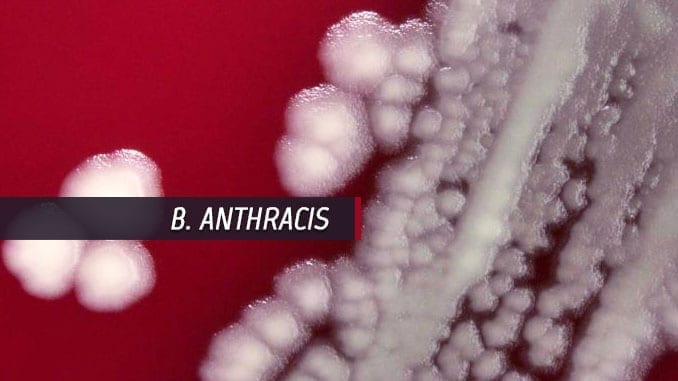An international research team studying anthrax lethal factor (LF) has discovered a tiny section of protein which may lead to more effective countermeasures.
Led by Professor Danny Altmann from Imperial College London, the interest in LF was triggered by research on a cohort of Turkish farmers who had developed natural immunity to the less dangerous form of cutaneous anthrax.
By studying this group and using a mouse model, the researchers mapped the regions of the LF toxin targeted by protective T lymphocytes (a type of white cell that is essential for human immunity). They found a specific part that could form the basis for a vaccine since it elicits a highly effective immune response and works across a wide range of people. Using this section of the LF protein they successfully protected mice against the toxic effects of the anthrax bacterium.
“Although we mostly work at the molecular level of immunity we wanted to start with the bigger picture so we studied a community of Turkish farmers exposed to anthrax to see how their natural immunity had developed,” stated Altmann.
Vaccination works by stimulating our immune systems to make protective antibodies. The toxic effects of anthrax are caused by a combination of three proteins – Protective Antigen (PA), Edema factor (EF) and Lethal Factor (LF). On their own each of these individual proteins are not toxic but they can still produce an immune response in terms of stimulating white blood cells. This makes them potential candidates on which to base a vaccine.
Initial anthrax vaccines used weakened forms of the anthrax spore, which produced some concerning side effects. More recently researchers have developed next generation vaccines to protect the military against bioterrorism.
Until now these have focused on the Protective Antigen (PA) protein as a means to stimulate the immune system but these vaccines require extensive treatment regimes and there are concerns about effectiveness and longevity. Research on immunity in the Turkish farmers who had developed cutaneous anthrax indicated they had developed a natural immune response to both PA and LF, suggesting that immunity to the Lethal Factor (LF) protein may contribute to protection.
Working both with blood samples from the previously infected farmers and with a mouse model, the researchers confirmed that LF protein provoked a strong immune response to anthrax. They honed in on two particular sections, or peptides, that make up the protein (LF 457-476 and LF 467-486), which stimulated particularly strong immunity and produced this effect over a wide range of genetic differences in ’tissue type’. This increases the chance that a vaccine based on these peptides would offer protection across genetically diverse human populations.
Finally, in collaboration with a team at the Defence Science and Technology Laboratory Porton Down, the researchers treated mice with a vaccine based on this region of the LF protein. This was shown to provide protection to the mice against the toxic effects of anthrax bacterium.
“Perhaps 90 per cent of research into anthrax vaccines has looked at PA but there are many other proteins to consider, including LF,” said Professor Altmann. “In this research we are not trying to revolutionize current vaccines, which is a long-haul process. Rather we are trying to demystify the immunology of this frightening infection, hopefully providing clues to help develop future vaccines.”
The study was funded through the US NIH Epitope Discovery Programme was funded by US National Institute of Health (NIH).
Source: Imperial College London, adapted



